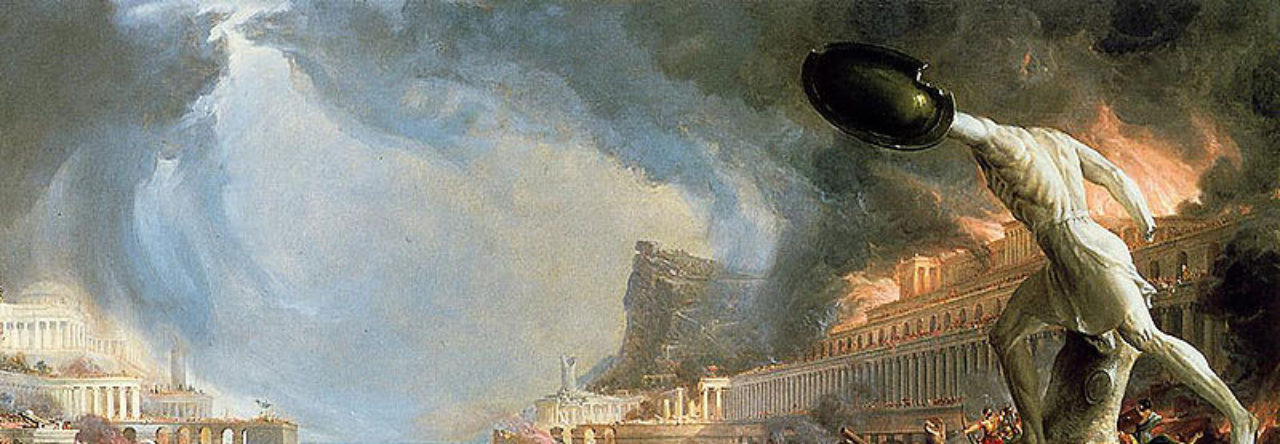(Post by Bruce Wilder, Elevated from the Comments)
The French Revolution is in many ways, it is the prime historical example of state failure related to fiscal failure (the inability to tax the rich in particular) leading to revolution (and post-revolution, to the unleashing of state capacity in Napoleonic empire building)
Ancien Régime France at the end of the 18th century had an underdeveloped financial sector, was overpopulated relative to its agricultural productivity, had lost a big chunk of its colonial empire and despite the theoretical advantages of its 17th century legacy of centralizing absolutism, was a litigious society of particularism, privilege, and resentment.
The crisis when it came found many fissures in the fiscal firmament of the state. The privileged often enjoyed exemptions from certain taxes, sometimes purchased with office by some ancestor. The collection of certain taxes was in private hands. At the time of the revolution, an extensive wall around Paris was being built by a consortium of private “tax farmers” expecting to grow rich on their role in colltecting such taxes. So, it wasn’t just that the rich and powerful avoided paying taxes, key figures were also skimming from the tax revenue collected.
The expedients of a fiat money and a central bank had been tainted fatally by John Law and the Mississippi Bubble. The Paris financial sector was entirely in the hands of Swiss and Dutch bankers and speculators. One of these, Necker, followed in the tradition of Colbert, and was quite popular in part because he created a system of State pawn shops, which relieved some of the inconvenience.
The political parallels and contrasts with the UK were stark. The UK had had its own South Sea Bubble at the same time as the Mississippi Bubble, but in the UK, the South Seas Company was folded into the Bank of England and the national debt was serviced ever after at a “risk-free” rate, a floor for other rates. The French Treasury paid rates to the Dutch and Swiss bankers that reflected the increasing risk of default. State finances in France were obscure. Necker would publish the first accounts in what historians now regard as a propaganda exercise. Once the French state was borrowing to meet its obligations to repay earlier loans, it almost didn’t matter how tax revenues were trending, because the debt began to compound and the servicing cost was escalating.
The UK had used its fiscal capacity and central bank to outspend France in a series of wars beginning at the end of the 17th century. There had been a pause, but the rivalry had resumed, culminating in the Seven Years’ War, with Britain subsidizing its continental ally, Prussia.
The inability of the UK to tax their 13 American colonies to finance the war debt caused the American Revolution before the French Revolution. And the example taught the French.
The UK had experienced an agricultural revolution of sorts in the late 17th and early 18th century as Adam Smith’s “improving landlords” began very fine calculations on the advantages of Jethro Tull’s inventions, turnips and forage in crop rotation and the profit from further enclosing the commons, a process underway since the Tudors. The gains in land and labor productivity were small but significant and fed a growing urban population. The population of England nearly doubled in the course of the 18th century.
France was not so fortunate. French agriculture was notoriously backward and resisted the promotional efforts of royal reformers and intendants. Feudal dues were collected in large areas by the church or impoverished nobles with no power to manage or improve the properties.
The nascent “business cycle” of 18th century France was an agrarian cycle of boom and famine: a good harvest could feed an expansion of mercantile and artisanal sectors. A famine would drive France into a business depression. The Physiocrats observed the pattern and made a theory out of it. And, from the Physiocrats came the liberalism of Turgot.
The same Dutch and Swiss bankers took liberalism and fashioned an argument for a laissez faire response to famine: let the price of grain be what the market will bear. Very appealing argument to grain speculators financed by Dutch and Swiss bankers.
Failing to control the price of bread or the distribution of grain stores had a profound effect on the course of the Revolution, motivating the common people of Paris to march and riot and so forth even as their betters debated the Rights of Man.
